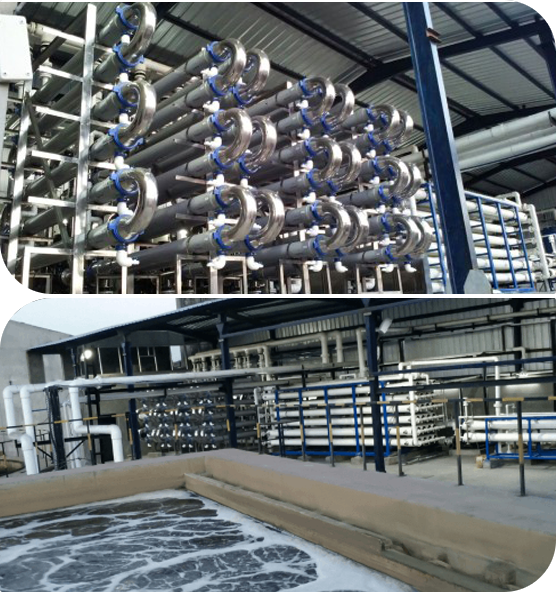
Waterman Engineers Australia is one of the foremost suppliers of Zero Liquid Discharge procedure. A ZLD system is really a remedy method that's utilised to get rid of each of the liquid waste from the procedure. The target of ZLD drinking water remedy is to cut back wastewater economically and create potable h2o that may be healthy for standard use. Zero discharge program is an advanced procedure strategy that comprises ultrafiltration, reverse osmosis, evaporation and fractional electro deionization. And we're a well-recognised supplier of ZLD systems.
In lots of Industries, like power, oil & gasoline, chemicals, mining and Some others, a large amount of wastewater is produced that has to be managed. Conventionally, this discharge of wastewater is completed via a plant outfall into a surface drinking water system like an evaporation pond, or in some instances deep perfectly injected. These procedures produce several environmental fears by the public in lots of areas of the world, as drinking water is often a scarce source and its management must be monitored. These fears have resulted inside the institution of ZLD procedures by lots of industries to lessen their environmental footprint and boost sustainability. And, Waterman Engineers Australia are finest ZLD suppliers you'll find for This technique.
Homes OF ZERO LIQUID DISCHARGE Process
The Attributes of the Zero Liquid Discharge method may vary depending upon the specific style and technological innovation utilised. On the other hand, some popular Attributes of ZLD systems consist of:
Water Conservation: One of the primary targets of ZLD units should be to preserve drinking water by minimizing the discharge of liquid squander in the natural environment.
Significant Drinking water Purity: ZLD methods are made to produce superior-excellent drinking water that's free from impurities and contaminants, that makes them appropriate for use in many industrial procedures.
Versatility: ZLD devices are sometimes created to support a broad number of input liquid streams, that makes them adaptable and suitable for use in several industries.
Superior Wastewater Treatment: Zero liquid discharge programs use Sophisticated wastewater procedure ways to take out impurities and contaminants through the effluent, producing substantial-quality water.
Squander Reduction: ZLD units aid cut down waste by lowering the quantity of liquid squander that should be disposed of and by generating a concentrated, stable squander material which can be safely and securely disposed of.
Energy Efficiency: ZLD programs is often energy-intensive a result of the significant energy specifications of evaporation and also other wastewater cure procedures. On the other hand, innovations in technology are creating Zero liquid discharge methods a lot more Vitality-productive and cost-efficient.
Waterman Engineers Australia manufactures Zero Liquid Discharge (ZLD) techniques created to eliminate all liquid waste, aiming to generate potable h2o and lessen environmental affect. Their ZLD programs normally consist of ultrafiltration, reverse osmosis, evaporation, and fractional electro deionization. Important systems utilised are Falling Movie Brine Concentrators, Pressured Circulation Crystallizer, and Other people, with a two-move strategy of pre-concentration and evaporation/crystallization to Get well and reuse water. These units are adaptable to unique industries, emphasizing water conservation, superior drinking water purity, squander reduction, and Strength efficiency. Zld System Manufacturer Zero Liquid Discharge System Complex specifications are diversified and customizable, taking into consideration elements like drinking water resource, circulation rate, and feed drinking water quality.
The need for Zero Liquid Discharge (ZLD) units arises with the necessity to handle environmental problems linked to drinking water scarcity and air pollution. In industries like electrical power, oil & gasoline, and mining, vast amounts of wastewater are produced. Customarily, this wastewater is discharged into bodies of water, triggering air pollution and depleting clean up water assets. ZLD devices purpose to minimize these impacts by treating and recycling wastewater in the economic system, thereby conserving water, lowering waste, and advertising and marketing sustainability.
When thinking about the technical specifications of a Zero Liquid Discharge (ZLD) method, crucial factors to center on involve the h2o resource it can address, the procedure's move level, the standard of feed h2o, the levels of cure involved, the recovery level of water, methods for concentrate disposal, elements of building, working circumstances, and method automation and Command. These things ensure the procedure's efficiency, longevity, and effectiveness in managing and recycling industrial wastewater.
Zero Liquid Discharge (ZLD) plants give Rewards such as water conservation, waste reduction, and pollution avoidance, contributing to environmental sustainability. They are relevant in industries like energy generation, oil and gasoline, chemical compounds, and mining, where they help in controlling industrial wastewater correctly, decreasing the ecological footprint, and complying with rigid environmental restrictions. These systems are vital in parts facing water scarcity and for industries aiming to improve their sustainability and operational efficiency.
FAQs for any Zero Liquid Discharge (ZLD) technique generally tackle its operational rules, Charge-success, routine maintenance requirements, environmental impact, applicability throughout different industries, and regulatory compliance. These thoughts assist end users understand the program's Added benefits, technological demands, and suitability for their certain wastewater management demands.
one. Zero Liquid Discharge (ZLD) is usually a wastewater therapy method intended to do away with all liquid squander.
two. The process's factors are affected by the precise industrial system, wastewater composition, and regulatory requirements.
three. Effluent treatment crops remove pollutants from textile effluents to prevent environmental contamination.
four. Pros involve h2o conservation, air pollution reduction, and regulatory compliance.
5. The objective is to minimize environmental impact by recycling h2o and cutting down waste.
6-nine. Effluent cure vegetation are stages in wastewater procedure: Most important (Bodily separation), secondary (biological treatment), and tertiary (advanced procedure).
10. Device functions contain filtration, sedimentation, Organic cure, and disinfection.
11. Restricting parameters are variables that have an effect on the treatment's performance, like pH and contaminant concentration.
twelve. Design and style considerations involve circulation price, effluent composition, and wished-for good quality of treated drinking water.